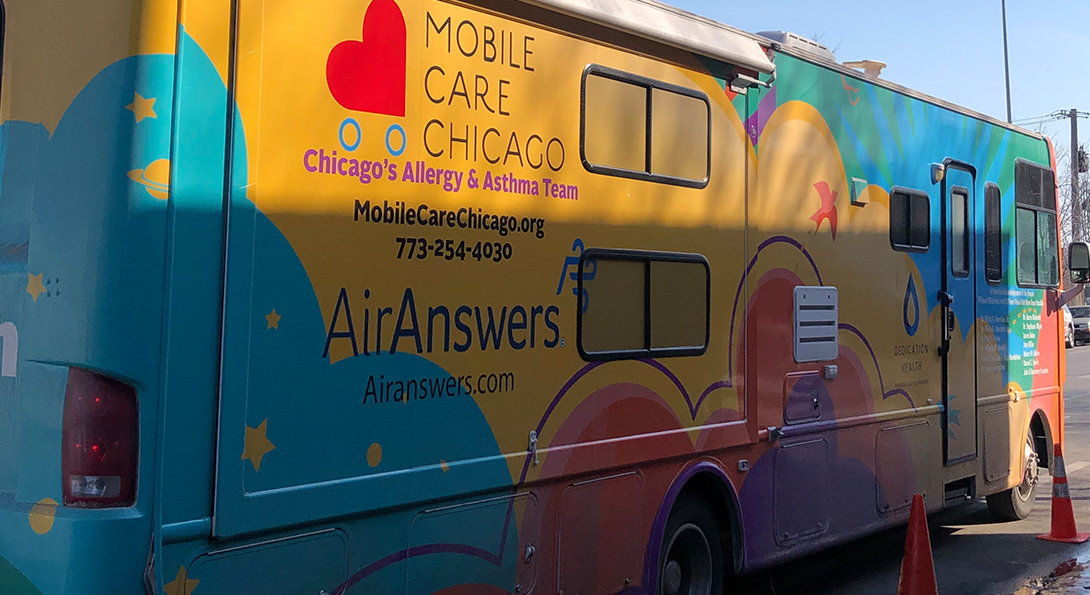Telehealth helped reduce no-show rate for asthma van patients, study finds

Prof Susan Walsh, UIC Nursing DNP students introduced innovative appointment model Heading link
Mobile Care Chicago’s “Asthma Vans” were facing a high no-show appointment rate.
The mobile clinic’s two vans travel to schools within the Chicago Public School District to deliver comprehensive asthma care to pediatric patients, but more than one-third of appointments were considered “failed patient visits” – or no-shows.
That’s because while the children were on site, their parents often were not. Many were struggling with logistics to make it to their child’s scheduled appointments.
Two UIC Nursing doctoral students developed an innovation solution: Use telehealth to beam the parents into the appointments, eliminating transportation and wait time barriers.
Now alumni Lindsay Van Houten, DNP ’18, and Kelsey Deegan, DNP ’20, published the results of their work in the Journal of Pediatric Nursing in April. Their advisor, clinical associate professor Susan Walsh, DNP ‘14, MS ’00, BSN ’80, PNP-PC, FAAN, and Matt Siemer, executive director of Mobile Care Chicago, are also co-authors on the paper.
“Mobile care Chicago is really unique in that vans staffed with asthma specialists travel to meet the patients in their communities and schools,” Van Houten says. “This is a great approach to getting asthma specialty care to children that need it. However, parents often struggled with taking time off of work or finding transportation to be able to attend the appointment, contributing to high no-show rates.”
Using the innovative, “patient onsite, parent off-site” model, no-show rates dropped from 36% to between 8% and 18% over a 10-month implementation period, according to the paper. Showing up to appointments is critical to preventing flare-ups that could require urgent care or emergency department visits, according to the paper.
“Having routine follow-up is key in reducing emergency department visits,” Deegan says. “That’s the goal. Emergency department visits are expensive and traumatic for patients and families.”
Using telehealth to bring in parents and guardians helps ensure that the visits are most effective, Walsh adds, so they can hear the prevention and care education offered at the appointment.
“Telehealth appointments have been an essential lifeline for our working parents,” Siemer says. “Consider that children with asthma or allergies may need scheduled appointments seasonally, or even monthly, to manage their chronic health condition. Parents who work feel like they’re balancing their child’s health against the stability of their income. Telehealth appointments are a welcome alternative to such an impossible choice.”
The model was first implemented in 2018, prior to the onset of the COVID-19 pandemic. Van Houten and Deegan created protocols for HIPPAA waivers and consent forms, piloted telehealth platforms, educated families about telehealth, and equipped the vans with iPads. This made for a “seamless transition to routine telehealth appointments by March 16, 2020,” according to the paper.
“The hindsight for this project was amazing,” Van Houten says. “With them having resources for telehealth, it was already up and running when the pandemic hit. These kids did not lose access to specialty care during the pandemic.”
Siemer agrees. “When the pandemic hit, we had transitioned to full telehealth within an hour,” he says. “In a time of immense anxiety for our families, that level of preparation meant the world to them.”